This skeleton of Belgrave Joe is the foundation sire of both fox terrier wire and smooth bloodlines. The skeleton is from the 1860s.
Image courtesy of: NPR, photographed by: Mary Altaffer
Culture
A museum for dog lovers opens in Manhattan
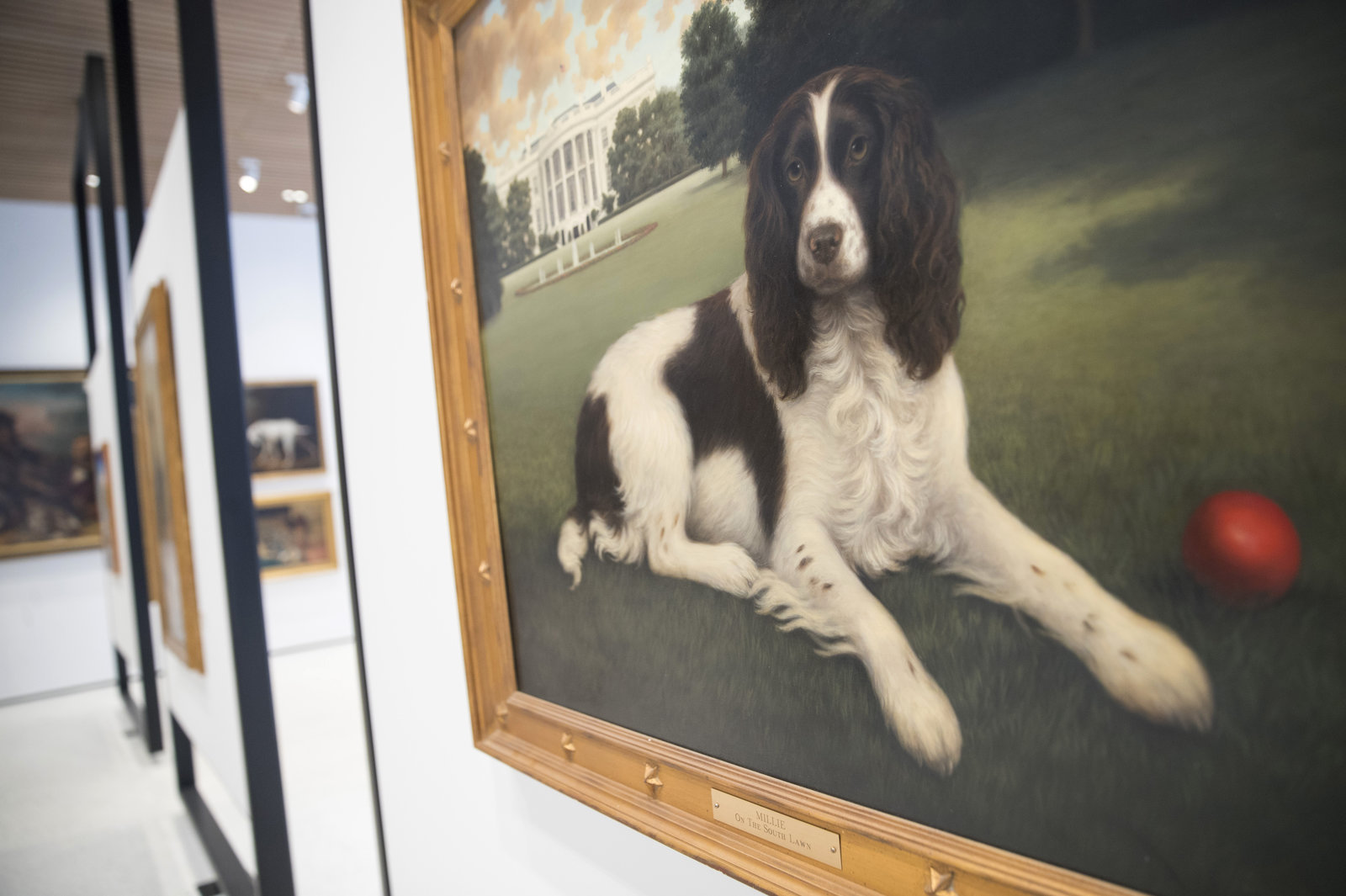
“Millie on the South Lawn” by Christine Merrill.
Millie was George H.W. Bush’s English Springer Spaniel. Next to the painting by Merrill is a letter written by Barbara Bush about the importance of dogs in humans’ lives.
Image courtesy of: NPR, photographed by: Mary Altaffer
With so many dog lovers throughout the world, this museum is sure to be a huge attraction. In February, the American Kennel Club opened the Museum of the Dog in Manhattan with 300 works on display and another 1,400 waiting their turn to be shown.
The museum is displayed across two floors connected by a double-height atrium which sports a beautiful floating staircase and is filled with realistic paintings where dogs are the primary subject. Go figure!
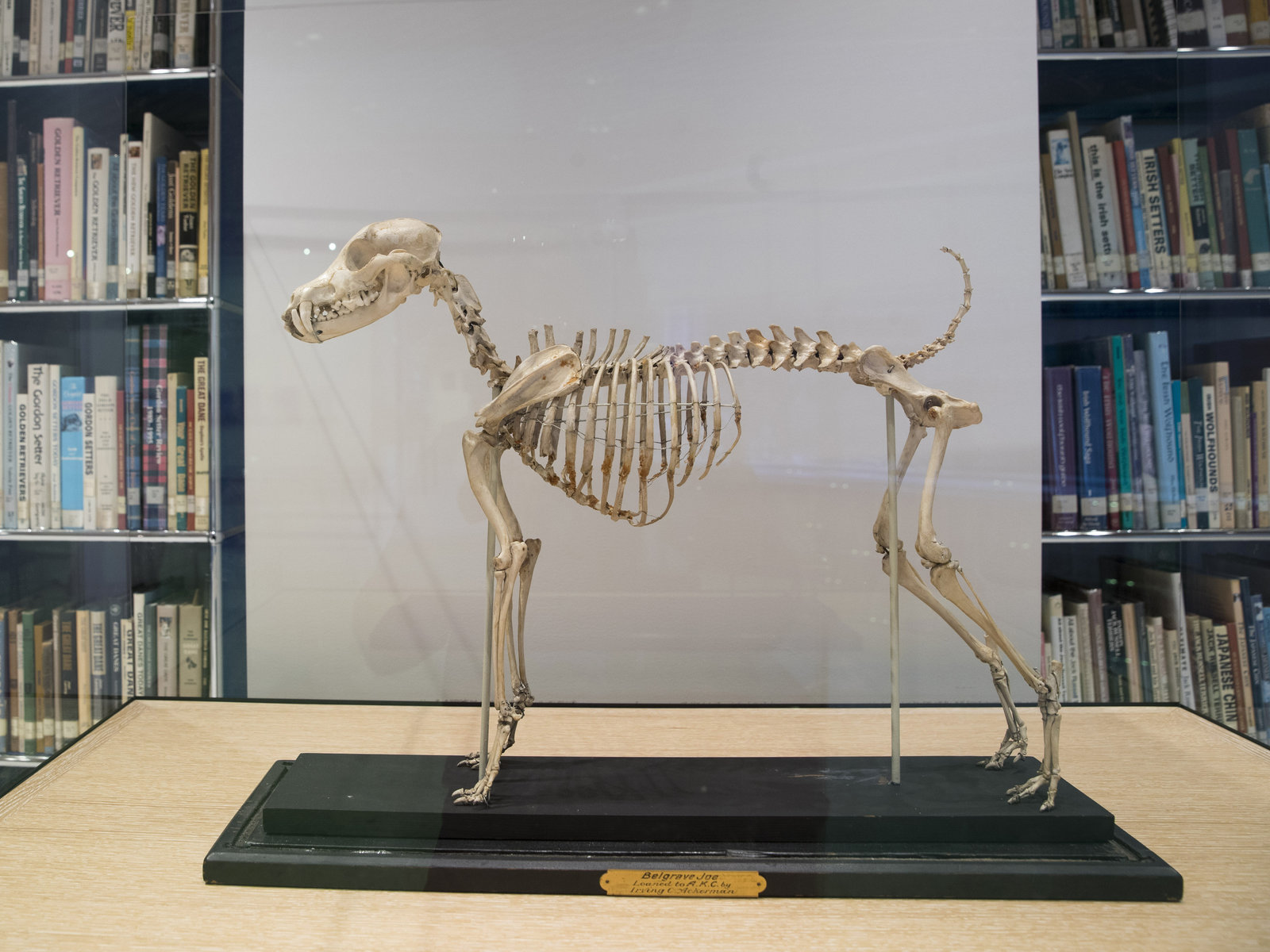
There are some big-name artists on hand such as Sir Edwin Landseer, the 19th century painter who made his mark with dog and horse pictures and the contemporary artist, William Wegman of Weinmaraner portraiture fame.

A few of the classical dog paintings on display.
Image courtesy of: Lit Times, photographed by: Mary Altaffer
The museum originally opened in 1982 at the old AKC headquarters on Madison Avenue. Unfortunately, due to a lack of financial support and limited space, the museum was forced to relocate to a mansion in St. Louis. Now, the AKC headquarters and the museum are once again under one roof. The museum hopes that the move to a more international stage will help educate the public on different dog breeds that the AKC recognizes.
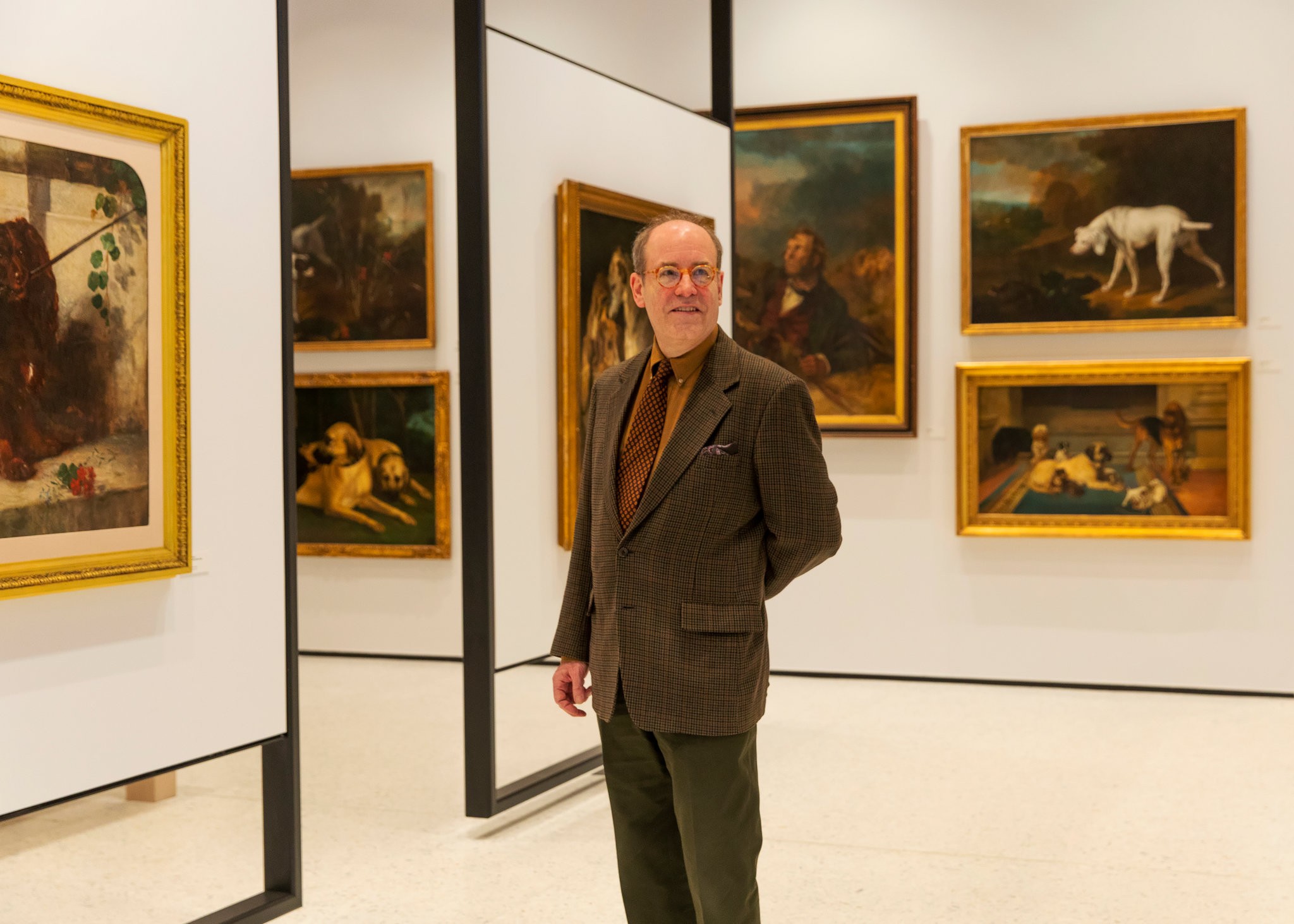
The museum’s executive director, Alan Fausel.
Image courtesy of: The New York Times, photographed by: Levi Mandel
The museum’s first floor has the largest works and centers on 19th-century dog art. It was during this time that dogs started residing inside homes and became house pets.
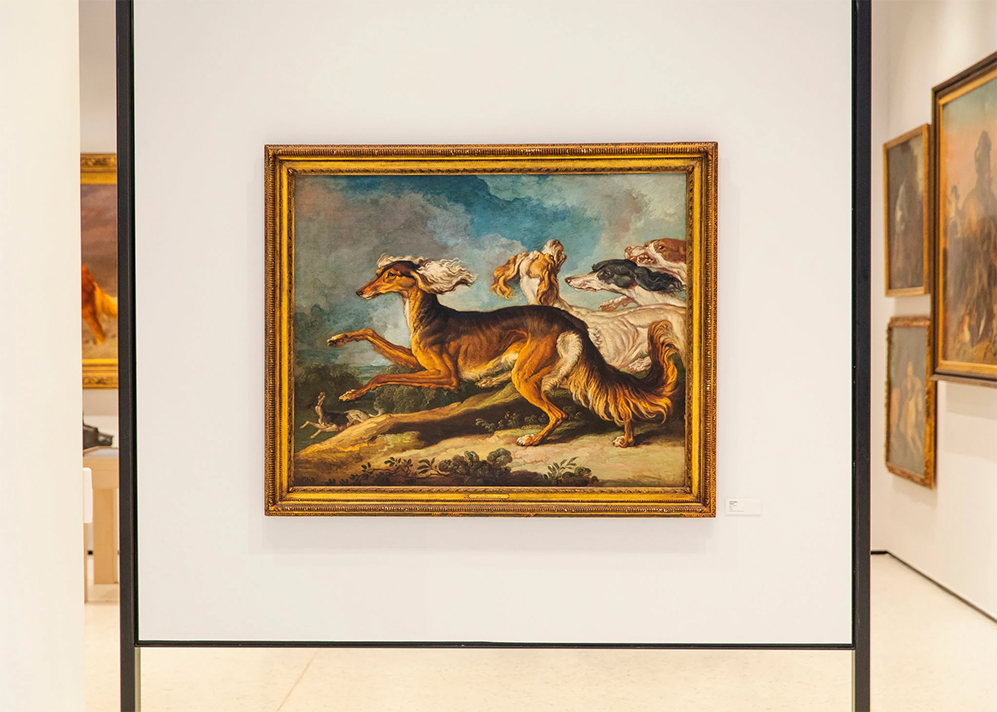
James Ward’s “Salukis,” 1807
Image courtesy of: The New York Times, photographed by: Levi Mandel
The second floor has the smaller pieces and objects that demonstrate dogs’ changing roles in society. There is a collection of spiky antique collars most likely worn by guard dogs and a wooden cart that dogs used to pull children around in.
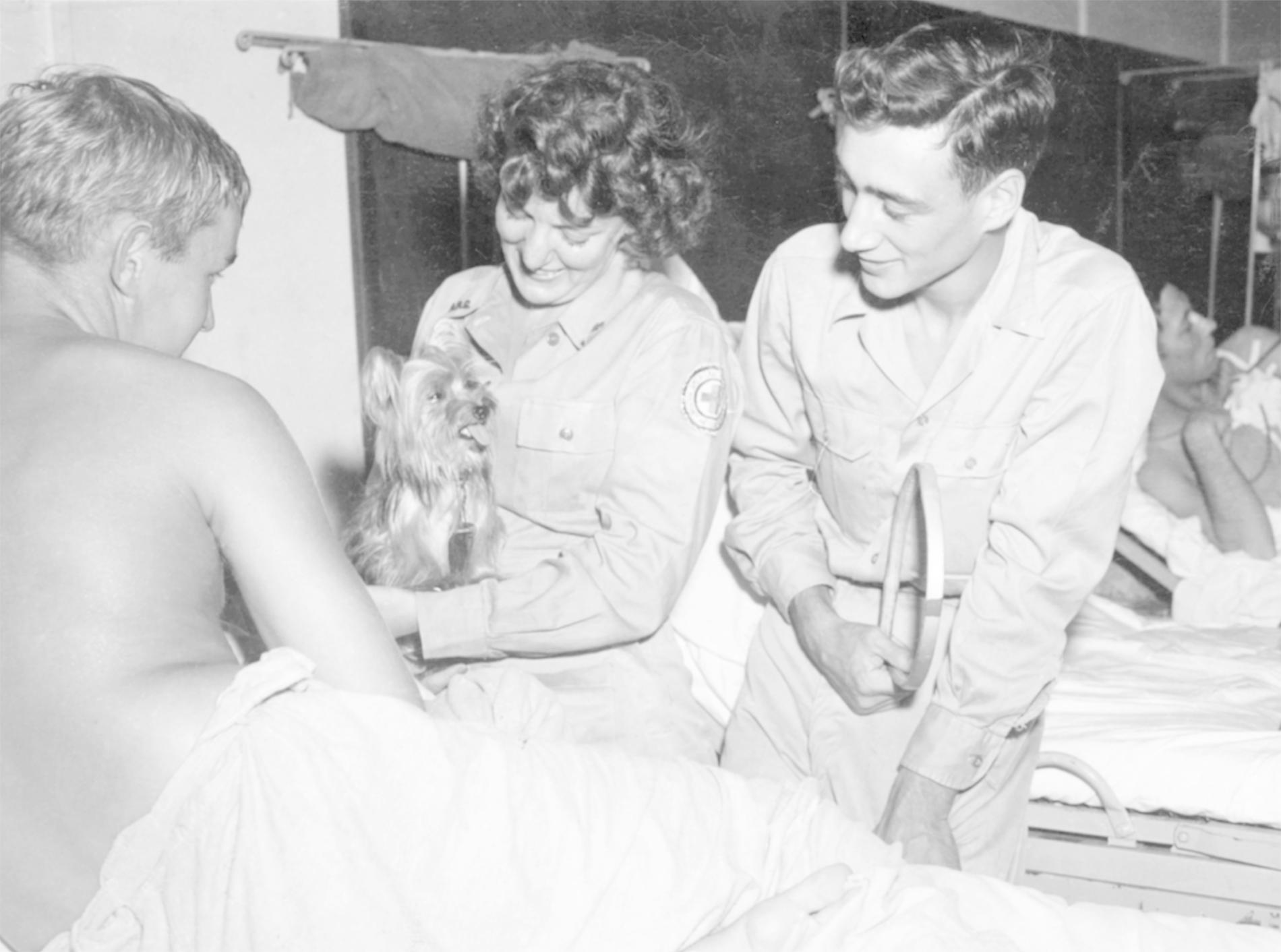
A Red Cross nurse brings Smoky to visit a patient at a U.S. Army hospital. The four-pound Yorkie quickly became famous for being an effective and popular diversion for the wounded men in the Philippines during World War II.
Image courtesy of: National Geographic
Perhaps the most touching display is the one dedicated to Smoky. This Yorkshire Terrier was found in a New Guinea foxhole during World War II. Even though she was underfed and sheared, Corporal Bill Wynne from Ohio adopted her and soon Smoky was helping out the operation.
With the Japanese bombing the Allied Forces’ communication lines, the Americans realized that they needed to run telephone lines through a pipe that stretched 70 feet underground from the base to three distinct squadrons. However, they didn’t have the proper equipment. The pipe was only 8 inches in diameter and the only way to put the lines in place would be by hand. Until then, the only foreseen option would be for dozens of soldiers to dig a trench to get the wires covered. Obviously, this would have left men exposed for long periods of time… a very dangerous feat!
The soldiers decided to send the tiny Yorkie through the pipe, hoping that this might be a solution. They tied a kite string to Smoky’s collar, put her inside the pipe, and her owner, Wynne, called to her from the other side coaxing her to walk through. The string was used to thread the wires though the pipe. The communication network was reestablished and Smoky was credited with saving the lives of 250 soldiers and 40 planes. From there, Smoky went on to help the war effort in a completely different way.
When Wynne caught dengue fever and was hospitalized, Smoky spent spent each night on his bed. During the day, the nurses would take Smoky on patient rounds. Quickly, everyone realized how much of a calming effect Smoky had on the patients. In essence, Smoky was the first ever therapy dog.
It’s wonderful that Smoky has gotten the credit he deserved at the Museum of the Dog!
